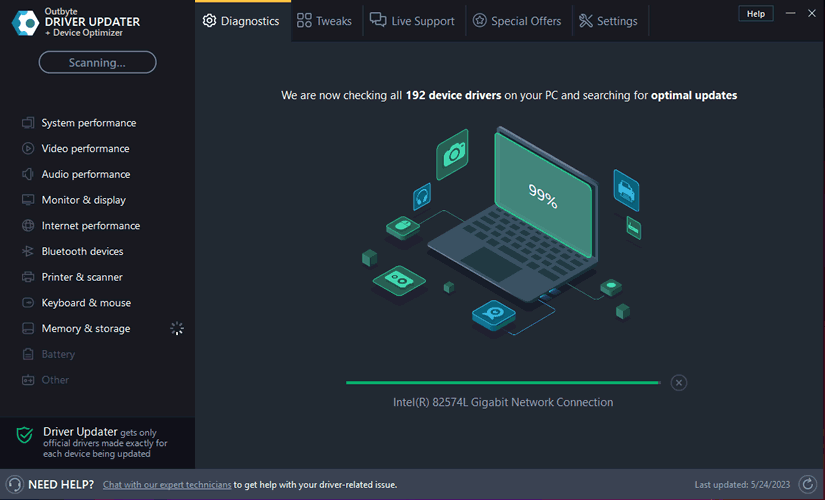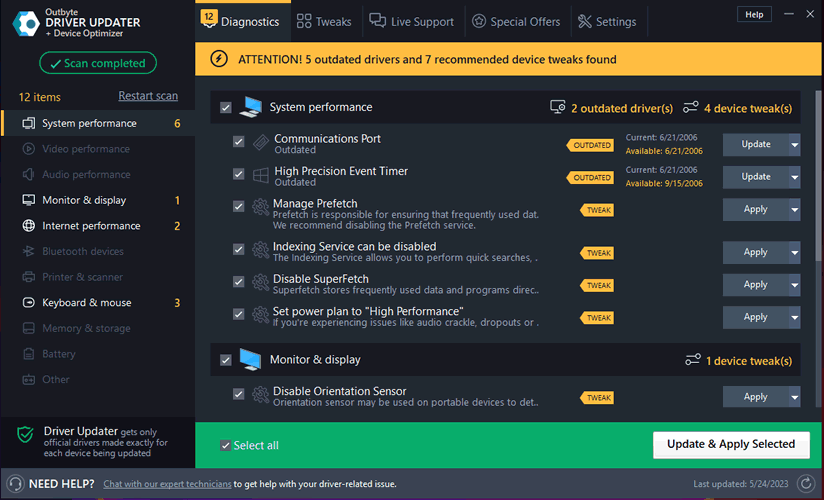Printer Drivers
A Printer Driver is a piece of software which connects your computer to your printer. Problems such as printer connection failure, unable to print or garbled output are common. They may be due to missing, out-of-date or corrupt drivers. Sometimes problems can occur after upgrading from one version of Windows to another, especially when upgrading to Windows 11. The reason may be that your current driver may work only for the prior version of Windows. Downloading and installing the latest driver for your specific printer make and model can fix these types of errors.
Find Driver Updates by Printer Model
Driver Updates for Popular Printer Models
Featured Printer Device Driver Updates
How to Update Drivers to Fix Printer Problems Quickly & Easily
Many Printer problems can be fixed by updating the drivers. After you upgrade your computer to a new operating system, such as Windows 11, problems can occur because your current driver may work only for the prior version of Windows. There are two ways you can update your Printer drivers.
Option 1 (Recommended): Update drivers automatically - Even computer newbies can update drivers with just a few clicks of a mouse. Use trusted software to identify, download and install the newest driver updates for your PC in one step. Your old drivers can be backed up and restored if you encounter any problems. You'll need novice to beginner level computer skills to use this method.
Option 2: Update drivers manually - Use DriverGuide to find the correct driver for your device and operating system. Next, download and install it by following the step by step instructions. You'll need average to intermediate level computer skills to use this method.
Option 1: How To Update Drivers Automatically
If you do not have the skill level or time to update your drivers manually, or are having difficulty finding the correct driver, you can do it automatically with the Printer Driver Update Utility.
This utility is an intelligent program which will automatically recognize your computer operating system and device. Then, it will find the correct drivers for it. There is no need to know which specific operating system you have, and there is no risk of downloading and installing the wrong driver. Automatic driver updates eliminate mistakes when installing or updating drivers.
You can scan for driver updates automatically with the FREE version of the software, and complete all necessary driver updates with the premium version.
Download the Printer Driver Update Utility.
Run the driver update utility and click the green Scan Now button. Your system will be scanned and automatically detect any problem drivers.

After the scan is complete, the utility will display a results page similar to the one below:

Click the Update button next to the out-of-date or missing driver. The correct version will be downloaded and installed automatically. Or, you can click the big green Update All button to automatically download and install the correct version of all the drivers that are missing or out-of-date on your system.
Once updating is complete, re-scan your system to verify that all drivers are up-to-date.
Option 2: How To Update Drivers Manually
To get the latest driver, including Windows 11 drivers, you can choose from our list of most popular Printer downloads or search our driver archive for the driver that fits your specific Printer model and your PC's operating system.
Once you have downloaded the new driver, next you must remove the current driver if it is installed. On a Windows PC, you do this by using a built-in utility called Device Manager. It allows you to see all of the devices attached to the PC, and the drivers associated with them.
Install Drivers With Device Manager
The printer driver should typically be located under a category called "Printers," "Print queues," or "Imaging devices."
Locate the device that is having the issue and double-click on it to open the Properties dialog box.
Click the Settings tab.
Click Devices and Printers button to open the Devices and Printers screen.
Right-click the printer and select "Printer properties."
On the General tab, click the "Change Properties" button.
On the Advanced tab, click the "New Driver..." button.
The "Add Printer Driver Wizard" will open. Click Next.
If you have an installation disk, insert it and click the "Have Disk" button. If you want to use Windows Update to locate a driver, click the "Windows Update" button. You can also pick from the list of manufacturers and printer models to see if an updated driver is available.
Follow the remaining instructions in the Wizard to complete the installation.
Visit our Driver Support Page for helpful step-by-step videos.